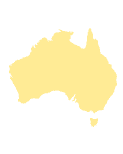 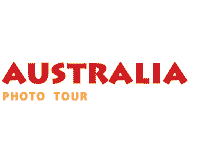 |
|
Page
3 of 3 |
|
The Pacific Islands, also known as Oceania, include thousands of islands located in the Pacific Ocean northeast of Australia. People came to the Pacific Islands in small boats nearly 60,000 years ago. Gradually most of the islands became settled, but there are still some that remain uninhabited. The islands are now grouped into three regions called Micronesia, Melanesia, and Polynesia, which are not part of any continent. The Pacific Islands cover a vast distance. The distance between some of the islands can be much larger than the entire distance across the United States. Over 4,000 miles separate Easter Island and New Zealand, two different island groups in Polynesia.  |
|
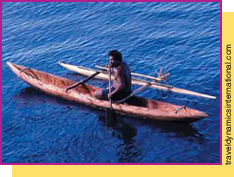 |
|
| |
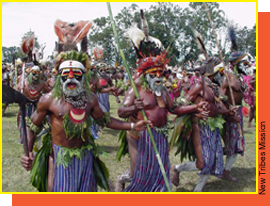 |
|
 New Guinea is a large island north of Australia. Most people in New Guinea are Melanesians, native islanders named for their dark skin. There are over 700 languages spoken in New Guinea. These men, known as Wigmen, are part of the Huli culture that live in the highlands of New Guinea. The Huli communicate and teach their customs through song and dance. Each dance has a special meaning such as celebrating a victory or saying an official hello or goodbye. The Wigmen pass on the traditional dances and wigs made of real hair and other natural items such as flowers, feathers, and grass, to the boys of the village. A wig can take up to 18 months to create. New Guinea is a large island north of Australia. Most people in New Guinea are Melanesians, native islanders named for their dark skin. There are over 700 languages spoken in New Guinea. These men, known as Wigmen, are part of the Huli culture that live in the highlands of New Guinea. The Huli communicate and teach their customs through song and dance. Each dance has a special meaning such as celebrating a victory or saying an official hello or goodbye. The Wigmen pass on the traditional dances and wigs made of real hair and other natural items such as flowers, feathers, and grass, to the boys of the village. A wig can take up to 18 months to create. |
|
| |
Located 1,000 miles southeast of Australia, New Zealand is a country made up of two main islands - North Island and South Island - and several smaller ones. The country is known for its natural beauty. Mountains, waterfalls, hot springs, rain forest, and glaciers can all be found in New Zealand. The eastern coastline of New Zealand has many inlets that can extend miles inland, like Marlborough Sound shown here. These inlets are a system of drowned river valleys formed by rising sea levels following the Ice Age.  |
|
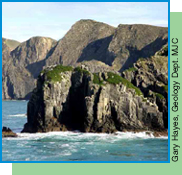 |
|
| |
|
|




